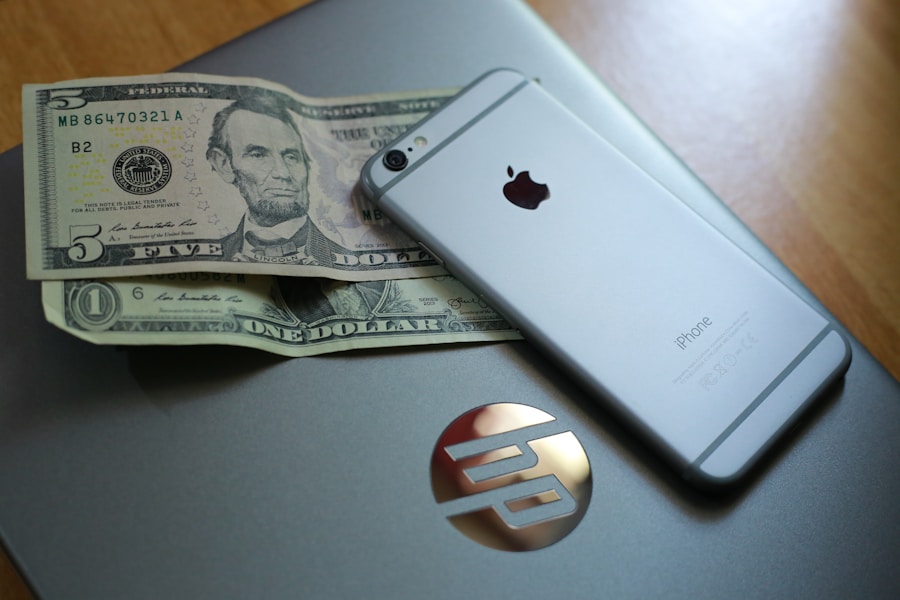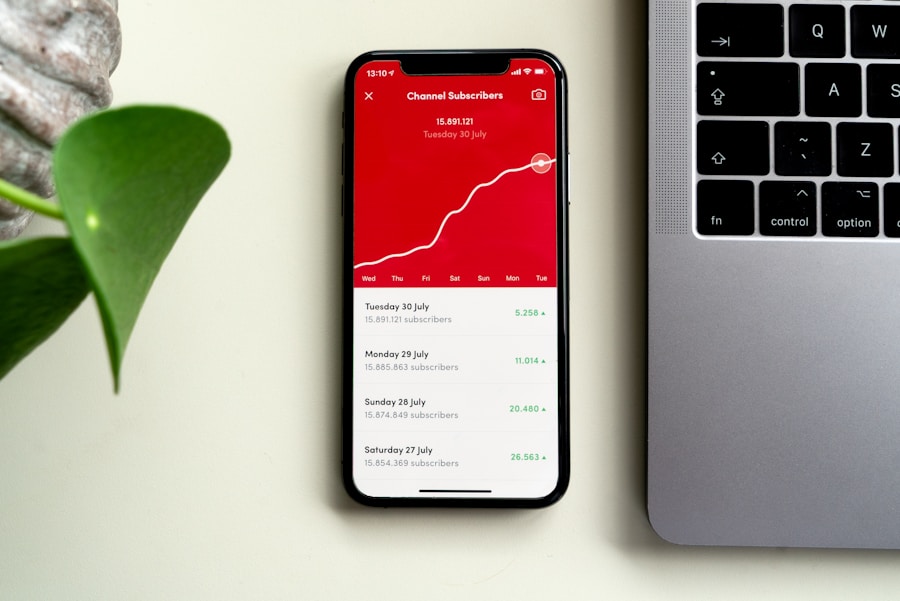In the digital age, finance apps have emerged as indispensable tools for managing personal and business finances. These applications cater to a wide array of financial needs, from budgeting and expense tracking to investment management and tax preparation. The proliferation of smartphones and tablets has made it easier than ever for individuals to access their financial information on the go, leading to a more informed and proactive approach to personal finance.
With the right finance app, users can gain insights into their spending habits, make informed investment decisions, and even streamline their tax filing processes. The rise of finance apps can be attributed to several factors, including the increasing complexity of financial products, the need for greater financial literacy, and the demand for convenience in managing finances. As consumers become more aware of their financial health, they seek tools that not only simplify their financial tasks but also provide valuable insights into their spending patterns and investment opportunities.
This article will explore various categories of finance apps, highlighting their features, benefits, and how they can empower users to take control of their financial futures.
Key Takeaways
- Finance apps offer a convenient way to manage personal finances and make informed financial decisions.
- Budgeting and expense tracking apps help users set financial goals, track spending, and stay within budget.
- Investment and stock market apps provide tools for researching stocks, monitoring market trends, and making investment decisions.
- Banking and payment apps offer secure and convenient ways to manage accounts, transfer funds, and make payments.
- Personal finance management apps provide a comprehensive overview of an individual’s financial situation and offer tools for planning and managing finances effectively.
- Tax and accounting apps help users track expenses, organize receipts, and prepare for tax filing.
- Credit score and monitoring apps offer insights into credit health and provide tools for monitoring and improving credit scores.
- In conclusion, leveraging finance apps can greatly improve financial literacy and help individuals make smarter financial decisions. It is recommended to explore different apps and find the ones that best suit individual financial needs and goals.
Budgeting and Expense Tracking Apps
Automated Expense Categorization
One of the key features of budgeting apps is their ability to automatically categorize expenses. By linking bank accounts and credit cards, apps like Mint and YNAB can import transactions and categorize them into predefined groups such as groceries, entertainment, and utilities. This automation saves time and provides a clear picture of where money is being spent.
Goal-Setting and Accountability
Budgeting apps often come equipped with goal-setting features that encourage users to save for specific objectives, such as a vacation or a new car. For instance, YNAB emphasizes a zero-based budgeting approach, where every dollar is assigned a job, whether it’s for spending or saving. This method fosters a sense of accountability, encouraging users to be intentional with their money.
Visual Representations of Spending Habits
Many budgeting apps offer visual representations of spending habits through graphs and charts, making it easier for users to identify trends and adjust their budgets accordingly. This feature enables users to gain a deeper understanding of their spending habits and make informed financial decisions.
Investment and Stock Market Apps

Investment and stock market apps have revolutionized the way individuals engage with the financial markets. These platforms provide users with the tools necessary to buy and sell stocks, ETFs, and other investment vehicles directly from their mobile devices. Apps like Robinhood and E*TRADE have democratized investing by eliminating traditional barriers such as high fees and minimum investment requirements.
Robinhood, for instance, is known for its commission-free trading model, which appeals to younger investors who may be hesitant to enter the stock market due to cost concerns. In addition to facilitating trades, many investment apps offer educational resources that help users understand market trends and investment strategies. For example, platforms like Acorns not only allow users to invest spare change from everyday purchases but also provide insights into portfolio performance and market conditions.
Furthermore, some apps incorporate social features that enable users to follow experienced investors or share their own strategies with a community of like-minded individuals. This social aspect can enhance learning and foster a sense of belonging among novice investors.
Banking and Payment Apps
| App Name | Number of Downloads | User Rating | Transaction Volume |
|---|---|---|---|
| Chase Mobile | 50 million+ | 4.7 | 1.5 trillion |
| PayPal | 300 million+ | 4.6 | 936 billion |
| Venmo | 40 million+ | 4.8 | 159 billion |
Banking and payment apps have transformed the way consumers manage their finances by providing convenient access to banking services directly from their smartphones. Traditional banks have developed their own mobile applications that allow customers to check balances, transfer funds, pay bills, and deposit checks using their device’s camera. For instance, Chase Mobile offers a comprehensive suite of banking services that can be accessed anytime, anywhere, making it easier for users to stay on top of their finances without visiting a physical branch.
In addition to traditional banking apps, digital payment platforms like PayPal, Venmo, and Cash App have gained immense popularity for peer-to-peer transactions. These apps enable users to send money instantly to friends or family members with just a few taps on their screens. Venmo, in particular, has become a cultural phenomenon among younger generations who appreciate its social feed feature that allows users to share payment notes with friends.
This blend of convenience and social interaction has made digital payment apps an integral part of modern financial transactions.
Personal Finance Management Apps
Personal finance management (PFM) apps encompass a broad range of functionalities designed to help users gain a comprehensive understanding of their financial situation. These applications often combine budgeting tools with investment tracking and savings goals into a single platform. One notable example is Personal Capital, which not only allows users to track their spending but also provides insights into retirement planning by analyzing investment portfolios.
PFM apps typically offer features such as cash flow analysis, net worth tracking, and retirement calculators. By aggregating all financial accounts in one place—bank accounts, credit cards, loans, and investments—users can see a holistic view of their finances. This comprehensive approach enables individuals to make informed decisions about spending, saving, and investing.
Additionally, many PFM apps utilize advanced algorithms to provide personalized recommendations based on users’ financial behaviors and goals.
Tax and Accounting Apps

Tax season can be a daunting time for many individuals and small business owners alike; however, tax and accounting apps have simplified the process significantly. Applications like TurboTax and H&R Block offer user-friendly interfaces that guide users through the tax filing process step by step. These platforms often include features such as document scanning for easy input of tax documents and real-time calculations that help users understand their potential refunds or liabilities as they complete their returns.
For small business owners, accounting apps like QuickBooks and FreshBooks provide essential tools for managing finances throughout the year. These applications allow users to track income and expenses, generate invoices, and even manage payroll—all from one platform. QuickBooks integrates seamlessly with various banking institutions, enabling automatic transaction imports that simplify bookkeeping tasks.
Additionally, many accounting apps offer reporting features that provide insights into business performance over time, helping entrepreneurs make data-driven decisions.
Credit Score and Monitoring Apps
Understanding one’s credit score is crucial for achieving financial health; thus, credit score monitoring apps have gained traction among consumers seeking to improve or maintain their creditworthiness. Apps like Credit Karma and Experian provide users with free access to their credit scores along with detailed reports that outline factors affecting their scores. These platforms often include educational resources that explain how credit scores are calculated and offer tips for improving them.
In addition to providing credit scores, many monitoring apps alert users to changes in their credit reports or potential fraud alerts. For instance, if a new account is opened in a user’s name without their knowledge, these apps can notify them immediately so they can take action. This proactive approach not only helps individuals safeguard their credit but also empowers them to make informed decisions regarding loans and credit applications based on their current credit standing.
Conclusion and Recommendations
As the landscape of personal finance continues to evolve with technological advancements, finance apps play an increasingly vital role in helping individuals manage their money effectively. From budgeting tools that promote responsible spending habits to investment platforms that democratize access to the stock market, these applications cater to diverse financial needs. Users are encouraged to explore various options within each category to find the tools that best align with their financial goals.
When selecting finance apps, it is essential for users to consider factors such as ease of use, security features, integration capabilities with other financial accounts, and customer support options. Many apps offer free trials or basic versions that allow users to test functionalities before committing financially. By leveraging these digital tools wisely, individuals can enhance their financial literacy, make informed decisions about spending and investing, and ultimately achieve greater control over their financial futures.
If you are looking for a comprehensive guide on creating a master budget tracker in Power Apps, you should check out the article here. This article provides step-by-step instructions on how to set up a budget tracker using Power Apps, which can be a useful tool for managing your finances effectively. Additionally, if you are interested in finding the best finance apps for iPhone, you may want to explore the article on budget calculators here. These resources can help you stay organized and on top of your financial goals.


